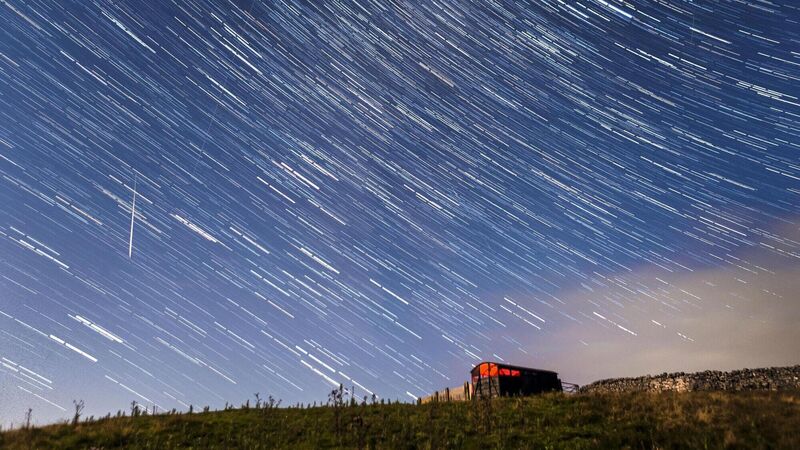Perseid meteor shower to light up Irish skies tonight with up to 100 shooting stars an hour

Up to 100 meteors an hour: Ireland to witness peak of Perseid shower tonight
Shooting stars will be visible across Ireland on Tuesday night as the annual Perseid meteor shower reaches its peak.
The Perseids, named because they seem to burst out of the constellation Perseus, are one of the highlights of the year for skygazers due to their high hourly rate and bright meteors, caused by the Earth slamming into debris left behind by comet 109P/Swift-Tuttle in July and August each summer.
These meteoroids, which are no bigger than grains of sand, burn up as they hit the Earth's atmosphere at speeds of around 36 miles per second, producing a dazzling display that lasts only a second or less.
Though there are about 12 meteor showers annually, the Perseids are the brightest.
Tonight, around 150 meteoroids will cross the sky each hour, though the full amount will not be visible due to the horizon blocking part of the view.
That said, an estimated 100 meteoroids may still be visible each hour in certain locations, particularly those that are flat and dark. The best time for skygazing tonight will be when the sky is darkest: after sunset but before moonrise.
Speaking to the earlier this month, Niall Smith, Head of Research at MTU and Head of Blackrock Castle Observatory, said that though the Perseids appear every summer and astronomers know a great deal about them, "there remains a thrill in simply going outside and looking up expectantly until a Perseid flashes across your vision."
"We know meteors are caused by small particles, typically of the size of a grain of sand, as they burn up in the Earth's atmosphere in a second or two. We know that those which show colours do so because they cause molecules of oxygen and nitrogen in our atmosphere, primarily, to glow momentarily. Or sometimes because of the vaporisation of the material in the meteors themselves," he said.
"We know the particles from the Perseids come from the tail of a comet called 109P/Swift-Tuttle which takes 133 years to orbit the sun once — a discovery made in 1865 by the Italian astronomer Giovanni Schiaparelli. So you’d be right to think we actually know quite a lot about them."
Mr Smith added: "Observing the death of a grain of sand that may have been wandering the solar system for more than 4 billion years may not advance our scientific knowledge, but it has a way of connecting us as humans to the greater cosmos with minimal preparation on our part"
"To paraphrase the great astronomer-communicator Carl Sagan, it does nothing to the romance of the Perseids to know a little bit about them."
While the celestial shower will peak tonight, anyone who misses out on seeing the Perseids need not worry — they will remain visible for the next week or so.












